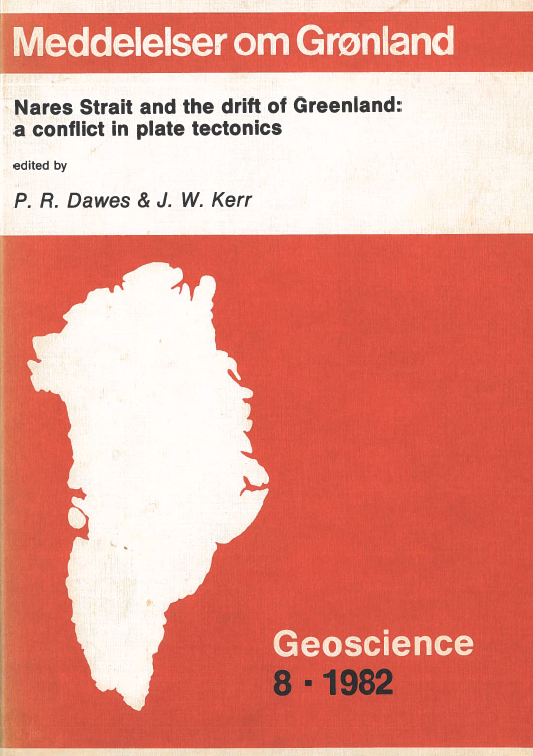Fragmentation of the Canadian Arctic Archipelago, Greenland, and surrounding oceans
DOI:
https://doi.org/10.7146/moggeosci.v8i.139583Abstract
Fragmentation of the Canadian Arctic Archipelago, Greenland and surrounding ocean basins is indicated mainly by a pattern of northeast-trending fractures and northwest-trending arches and rifts. Based on a comparison of this structural pattern with experimentally produced fracture patterns, a new evolutionary concept for the Cenozoic era is proposed for the region. The Eurasia Basin and North Atlantic sea-floors developed as rift-generated tensional zones separated by a later developed dextral transform shear zone, here named the Nansen Shear Zone. Sub-parallel to and some 2000 km southwest of this shear couple is another less well-developed system comprised of M'Clure Strait and Baffin Bay which were initiated by rifting and later connected by a dextral transform shear zone, here named the Parry Channel Shear Zone. The landmass between these two transform couples (Greenland and the Queen Elizabeth Islands) probably was and is acted upon by a sinistral force couple as a result of spreading between these couples and is probably partially responsible for generating internal deviatoric tensional and compressional stresses noted from earthquake data. Fractures and arch axes within the Queen Elizabeth Islands have similar directions to respective features within the North Atlantic sea-floor; stresses may have similar orientations in both regions.
Nares Strait may be a poorly-developed sinistral transform shear zone that joins rift-generated ocean basins: the Eurasia Basin to the north and Baffin Bay to the south.
Downloads
Published
How to Cite
Issue
Section
License
Coypyright by the authors and the Commision for Scientific Research in Greenland / Danish Polar Center. No parts of the publications may be reproduced in any form without the written permission by the copyright owners.


